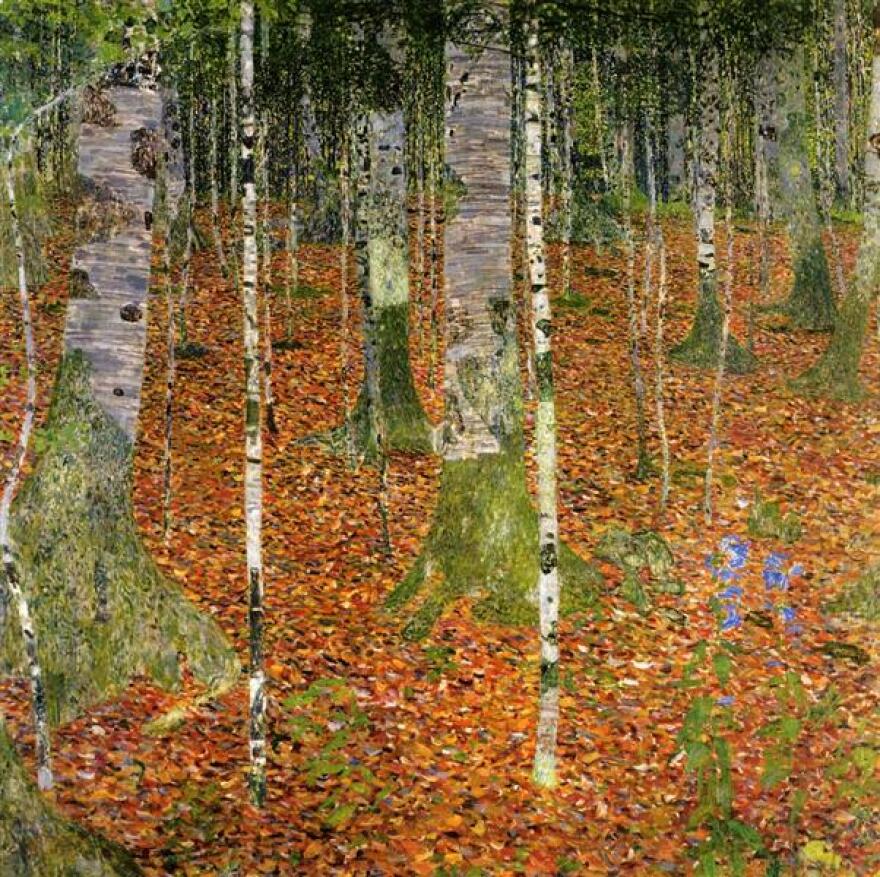Austrian painter Gustav Klimt often walked in the forest, presumably in the famous Vienna Woods, but his Birch Forest series could have easily been painted in the Great Lakes region where the birch forests normally glow golden in autumn.
There's something funny about his paintings, though: he rarely shows the sky or treetops.
Folks who drive north for the fall colors are usually looking for reds and oranges, and sometimes they notice that maple trees are yellow or even still green on one side of the road but red on the other.
The red leaves develop on the south-facing sides of the trees, which, except when it was cloudy, were in sunlight all day in September.
Leaves on shady-side and inner branches do not develop the rosy glow.
Birch and aspen trees almost always have yellow leaves, regardless of weather or location.
During the growing season, tree leaves are full of sugars, gums and tannins.
Most of these chemicals migrate into the tree when the leaves start to die, but in maple leaves, excess sugars and a few random crystals remain.
When the trees stop producing chlorophyll, these substances undergo chemical reactions, and sunlight initiates chemical changes that create red pigments.
The more sunlight a tree receives, the redder maple leaves are apt to turn.
During years when we have endless cloudy, foggy or unfortunately smoky days, reds are muted and other fall colors are subdued.
Deciduous forests' edges are predominantly aspen and birch, which tend to have yellow leaves, but even the maples in our woods are yellow - yellow because they create their own shade.
Most forest leaves don't get enough sunshine to turn red, but though it's hard to see from below, the leaves at the very tops of forest trees often turn red.
Because canopy leaves are exposed, not only to direct sunlight, but also to the wind, they tend to fall first.
This creates the most lovely dappled carpets, just like those in a Gustav Klimt painting.
Look down during your next fall hike through a birch forest - nature will roll out the red carpet for you.







